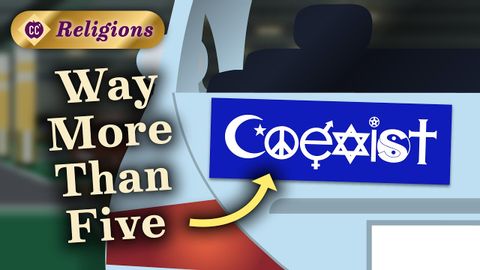到底有多少種宗教?宗教速成班 #2 (How Many Religions Are There?: Crash Course Religions #2)
Jack 發佈於 2024 年 10 月 10 日  沒有此條件下的單字
沒有此條件下的單字US /ˈɛpɪˌsod/
・
UK /'epɪsəʊd/
- n.插曲;集;(電視或廣播節目的)一集;事件;一段時期;(疾病的)發作
- v.t.裝出;假裝;以為;(想當然地)認為;承擔;就任
US /ˈpræktɪs/
・
UK /'præktɪs/
- n.(醫生;律師等的)業務;工作;練習;慣例
- v.t./i.(醫生;律師等)開業;實踐;練習;操練;實踐
